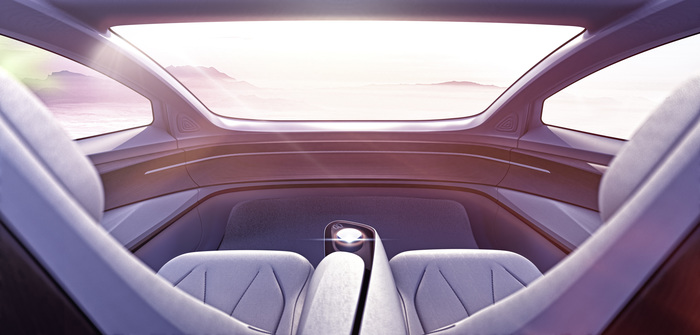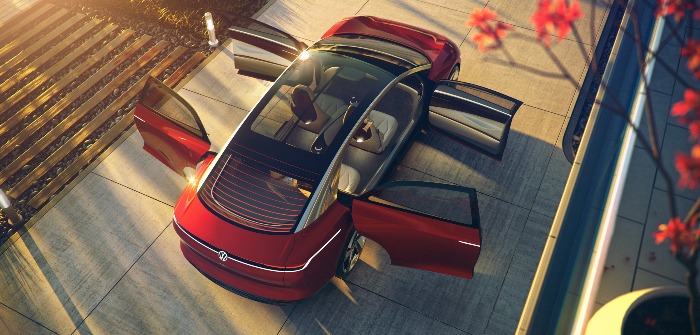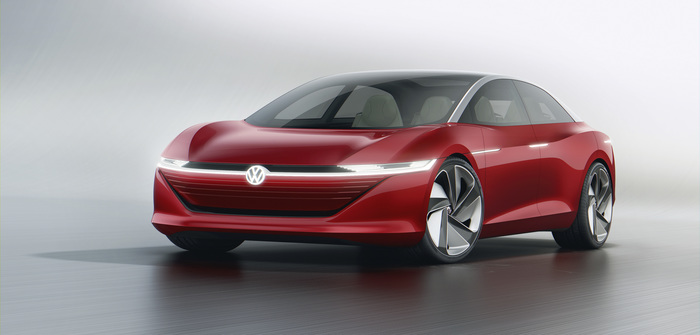Volkswagen has unveiled a new member of its I.D. family of electric vehicles, which it says will be launched starting in 2020. The I.D. Vizzion saloon concept features Level 5 autonomy and with AI, is capable of learning.
I.D. Vizzion drives itself without the need for a driver’s seat, steering wheel, dash panel or foot pedals. The car will use a combination of laser, ultrasonic, radar and cameras to perceive its surroundings. Traffic data will be obtained continually via the cloud and compared with the car-produced data. V2V and V2X will also enable the car to benefit from swarm intelligence. The car will also integrate high-resolution digital maps for navigation. Volkswagen assumes that Level 4 and Level 5 driving will be a reality by 2025.

The I.D. Vizzion has an electric all-wheel-drive system with two electric motors that deliver a system power of 225kW, a lithium-ion battery with 111kWh capacity and a driving range of up to 665km. The battery is housed in the floor. The All-New Electric Architecture, bringing with it the far-forward placement of the front axle, provides maximum space in the interior.
The vehicle is primarily operated through gesture and voice control. In addition, all passengers can use Microsoft’s HoloLens mixed reality eyewear, which projects a virtual interface into the real space by augmented reality. The interface is a virtual ring over which the occupants can communicate with the car and other digital devices by gesture control. There are also two real rotary/pushbutton controls on the centre console to enable the manual control of functions such as entertainment volume, to give general directional commands and stop the vehicle.

The interior is accessed via doors that open 90°. The cabin features four seats and can be personalized by travel mode. The windows can be electrochemically darkened, and environmental noises can be eliminated by active noise cancellation. Volkswagen’s new CleanAir system is designed to maintain ideal air quality using an active filter.
The car’s virtual assistant will be capable of learning its occupants’ preferences. The car recognizes its occupants by biometric facial recognition or electronic device, such as a smartphone. It can call up their preferences from the cloud, and then adjust things such as the seats and air-conditioning accordingly. The virtual assistant also reacts predictively to certain events and points of interest. For instance, if the car is approaching an unavoidable traffic jam, the assistant automatically communicates the new arrival time. If there is a cafe along the route that a passenger would like to use, the assistant asks whether it should drive there or perhaps order and pay for a coffee to go. The car can also be interconnected with digital devices including fitness trackers. Via these and/or the HoloLens, the I.D. Vizzion tracks and reacts to the vital parameters of its passengers, for example adjusting the temperature if someone is too hot.
The car features HD Matrix headlights, with 8,000 pixels. These dots of light will be used to project symbols and displays in front of the car, for example a pedestrian crossing.


